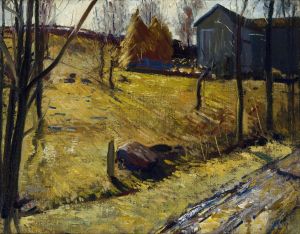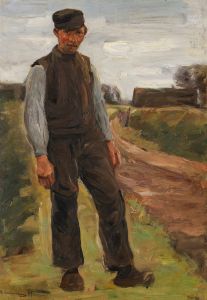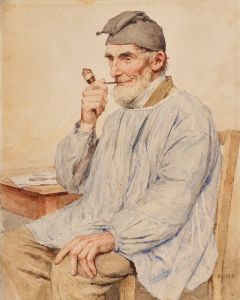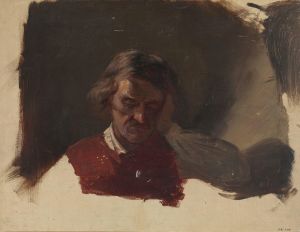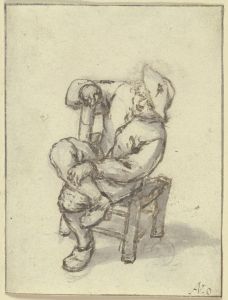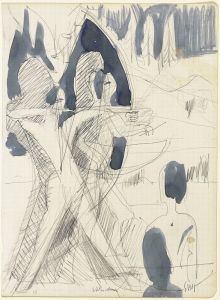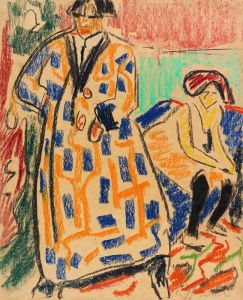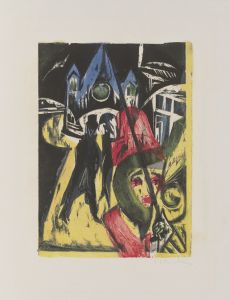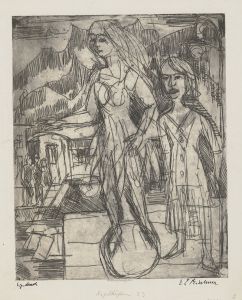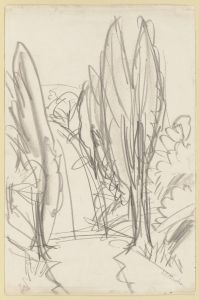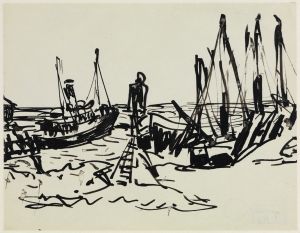
Bauer mit Pferdeschlitten
A hand-painted replica of Ernst Ludwig Kirchner’s masterpiece Bauer mit Pferdeschlitten, meticulously crafted by professional artists to capture the true essence of the original. Each piece is created with museum-quality canvas and rare mineral pigments, carefully painted by experienced artists with delicate brushstrokes and rich, layered colors to perfectly recreate the texture of the original artwork. Unlike machine-printed reproductions, this hand-painted version brings the painting to life, infused with the artist’s emotions and skill in every stroke. Whether for personal collection or home decoration, it instantly elevates the artistic atmosphere of any space.
Ernst Ludwig Kirchner (1880–1938) was a prominent German expressionist painter and one of the founding members of the art group Die Brücke (The Bridge), which played a pivotal role in the development of modern art in the early 20th century. His works are characterized by bold colors, dynamic compositions, and a focus on emotional and psychological depth. Among his many notable works is the painting Bauer mit Pferdeschlitten (translated as Farmer with Horse-Drawn Sled).
Bauer mit Pferdeschlitten is an oil painting created in 1919, during a period when Kirchner was living in Davos, Switzerland. After moving to Switzerland in 1917, Kirchner sought solace in the Alpine environment, which greatly influenced his artistic output. The rural life and landscapes of the region became recurring themes in his work, reflecting both his admiration for the simplicity of rural existence and his desire to recover from the psychological and physical toll of World War I.
The painting depicts a farmer driving a horse-drawn sled through a snowy Alpine landscape. Kirchner's use of vibrant, non-naturalistic colors and angular forms is emblematic of his expressionist style. The composition conveys a sense of movement and vitality, capturing the dynamic relationship between the farmer, the sled, and the surrounding environment. The snow-covered landscape, rendered in bold strokes and contrasting hues, emphasizes the stark beauty of the Alpine setting.
This work is part of Kirchner's broader exploration of rural themes during his time in Davos. In these works, he often portrayed scenes of daily life, such as farming, logging, and transportation, as well as the natural beauty of the mountains. These subjects allowed him to experiment with form and color while also reflecting his personal connection to the region.
Kirchner's time in Davos marked a significant shift in his artistic career. After suffering a mental breakdown in 1915 and being discharged from military service, he sought refuge in the Swiss Alps, where he hoped to find peace and inspiration. The isolation and tranquility of Davos provided him with a new perspective, and his art from this period reflects a more introspective and harmonious approach compared to his earlier urban scenes.
Today, Bauer mit Pferdeschlitten is recognized as an important example of Kirchner's post-war work and his engagement with the Alpine environment. The painting is held in a private collection and has been featured in exhibitions highlighting Kirchner's contributions to modern art and his connection to the Swiss landscape.





